The eternal question for photographers as the conditions on the Nordschleife lent themselves to slow shutter speeds but are we sublime or merely ridiculous?
John Brooks, May 2013

Lap one and Pedro Lamy flies at the Flugplatz, the Aston Martin was the leader of the pack as Frank Stippler’s Audi had already made a break for it. The conditions that prevailed on Monday were not to the liking of the Vantage and they faded from contention but the guys all gave it a lash when behind the wheel.
John Brooks, May 2013
A recent celebration of the Steve McQueen classic “Le Mans” in Los Angeles brought out all the stars. DDC’s own Bond Girl was on hand to add lustre to the occasion and here she gives her take on the screening.
When the film “Le Mans” was released in 1971, I was barely driving. It was the era of the Saturday night date at the local drive-in theater. I saw “Le Mans” at the Starlight. Please rest assured that any exuberance exhibited while watching cars racing around a track in the French countryside existed purely for the benefit of the boyfriend of the moment. However, it wasn’t all feigned. There was that crush on Steve McQueen. As far as I was concerned, the King of Cool just embodied the sexy Hollywood superstar. So while a trip to the drive-in to see Le Mans was, for some, all about the racing footage, I just wanted to gaze up into those dazzling blue eyes. Talk about a passion pit.
In the racing world, however, it wasn’t just about McQueen’s taciturn Michael Delaney and those charismatic facial expressions. Beyond his craft, enthusiasts respected the man as a competent racer, making the role a realistic fit. For all that, the movie itself co-starred in pole position with the Circuit de la Sarthe. Considered by many to be the most influential racing film ever made, some forty years later, “Le Mans” enjoys an almost cult like following. From Delaney’s slate gray 911S, to the Heuer Monaco on his wrist, to the 917 in Gulf Colors, the film resonates.
Still, aside from McQueen, just who and what were we actually watching? For starters, actual footage from the 1970 24 Heures du Mans. Moving on from there, how about a supporting cast including the likes of Brian Redman and Jo Siffert to name just a few of the notables – piloting various Porsche 917’s and Ferrari 512’s. In addition to list of drivers named in the credits was a very young Jürgen Barth. When asked of his own role in the film, Barth replied, “I drove the 911 that caused the crash.” We were watching legends at work, no wonder it all appeared to be so authentic.
Voyeuristically, we screamed along the Mulsanne Straight in the rain, at night and in the home stretch. And that’s what makes the film more of a documentary, that insider’s perspective. At the time, a good percentage of us truly had no idea we were watching the real deal as we munched popcorn and steamed up the windows of our own rides.
Today, aside from in-home, Blu-Ray screenings, the chance to revisit “Le Mans” on the big screen is almost never going to happen. But the opportunity did arise recently, and what better venue than The Chinese Theater in LaLa Land? Hollywood is not only the land of the star, but playground to the luxurious, the fast, the cool, the expensive automobile. These attributes converged at the Turner Classic Movie Festival with Porsche Cars North America joining the celebration by hosting Club TCM, held at a venerable hotel. A pre-screening discussion presented two of racing’s own cool cats, Derek Bell and Vic Elford, on the dias, and rounding out the expertise was McQueen’s son, Chad. Each reminisced about a simpler time in racing, about McQueen and his driving, his personality and their own experiences during the filming of the movie.
Basking in the glitz and glamour of Tinseltown, the approach to Hollywood’s Roosevelt Hotel revealed two Porsches positioned on their own crimson runner; a brand-new, bright yellow 991, and a black, completely original 1965 911. Needing no introductions, the pair stood in silent welcome as fans of the film and the marque arrived to revisit 1971 in the comfort of Hollywood’s Chinese Theater.
It may not have been the Starlight, but then again, I’ve been driving for a long time now.
Lizett Bond, May 2013
Photos courtesy of Lizett and scans courtesy of Michael Keyser, taken from my review of his book on the making of the movie
http://www.doubledeclutch.com/?p=3224
Up early one recent Saturday and onto the train bound for Manchester Piccadily. There the Special Correspondent and I met up with David Lister, the photographers’ photographer. He chauffeured us over to Trafford Park for “Passion & Power”. It was a great little show, well worth a visit when it comes round next year. The Special Correspondent casts his eye over the ingredients and comes up with his customary tasty automotive bouillabaisse. 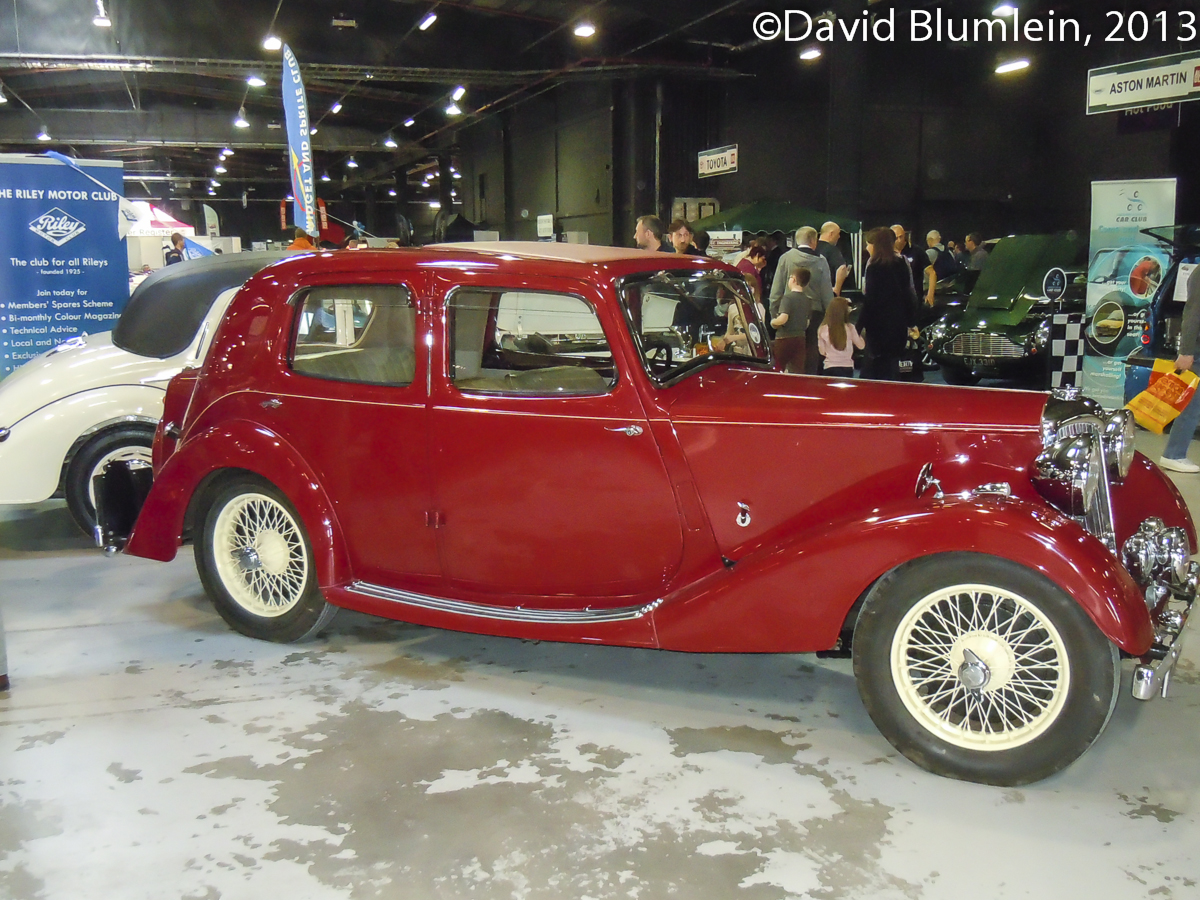
1937 Riley 1.5-litre Touring Saloon
By the late Thirties Riley, like Triumph, were offering a wide range of different models. The Touring Saloon was one of the range of 1.5-litre 4-cylinder cars and was distinguished by having an extended luggage boot, not so usual in pre-war cars. The engine was the classic Riley unit with two high-mounted camshafts in the block as devised by Percy Riley for the 1087 c.c. Nine in 1926; it had been re-designed with a similar layout by Hugh Rose as a 1.5-litre for the new 1935 range.
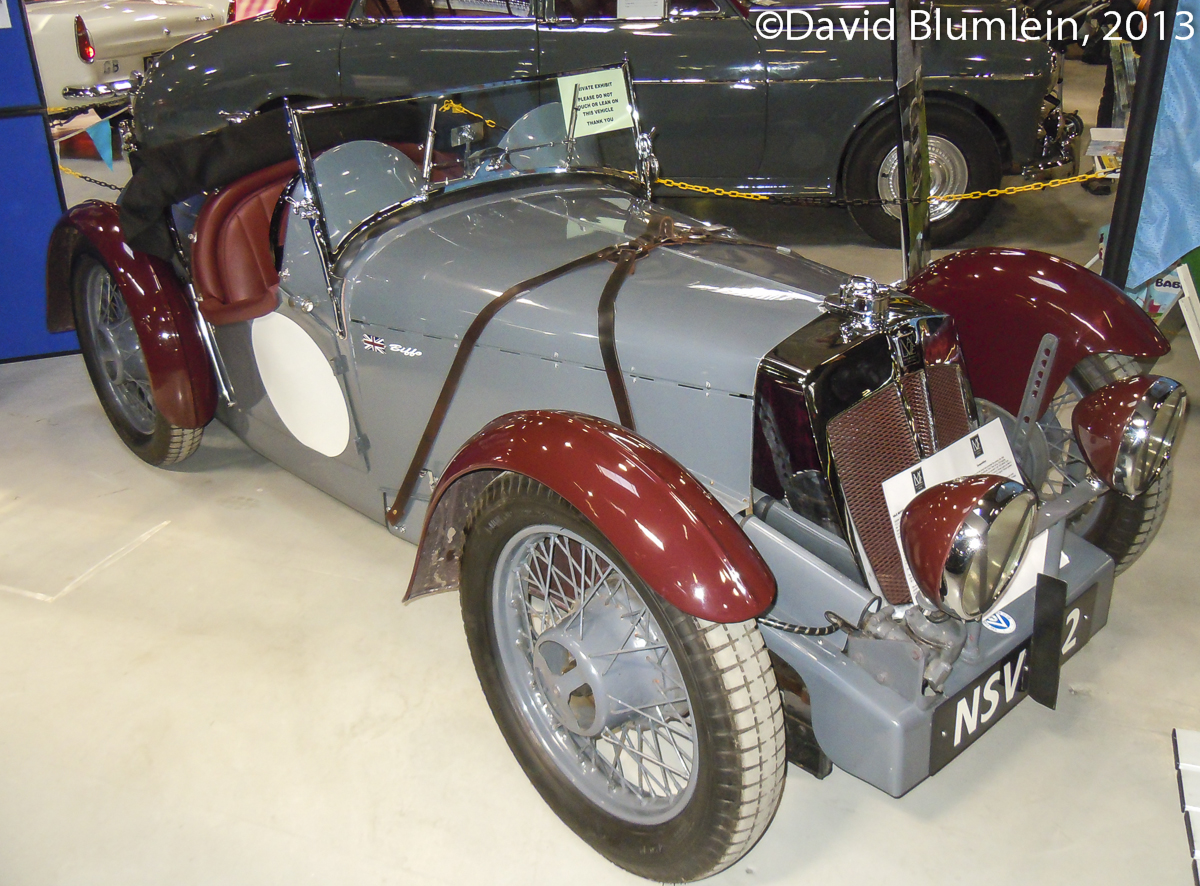
Vale Special
These little sports cars were made in Maida Vale from 1932-35. They used an 832 c.c. Triumph Super Seven engine, and its underslung frame and consequent low centre of gravity gave it excellent roadholding. In 1935 a 1098 c.c. Coventry-Climax engine was fitted. This car is no. 25 of 100 cars made. Ian Connell raced a supercharged version in 1935.
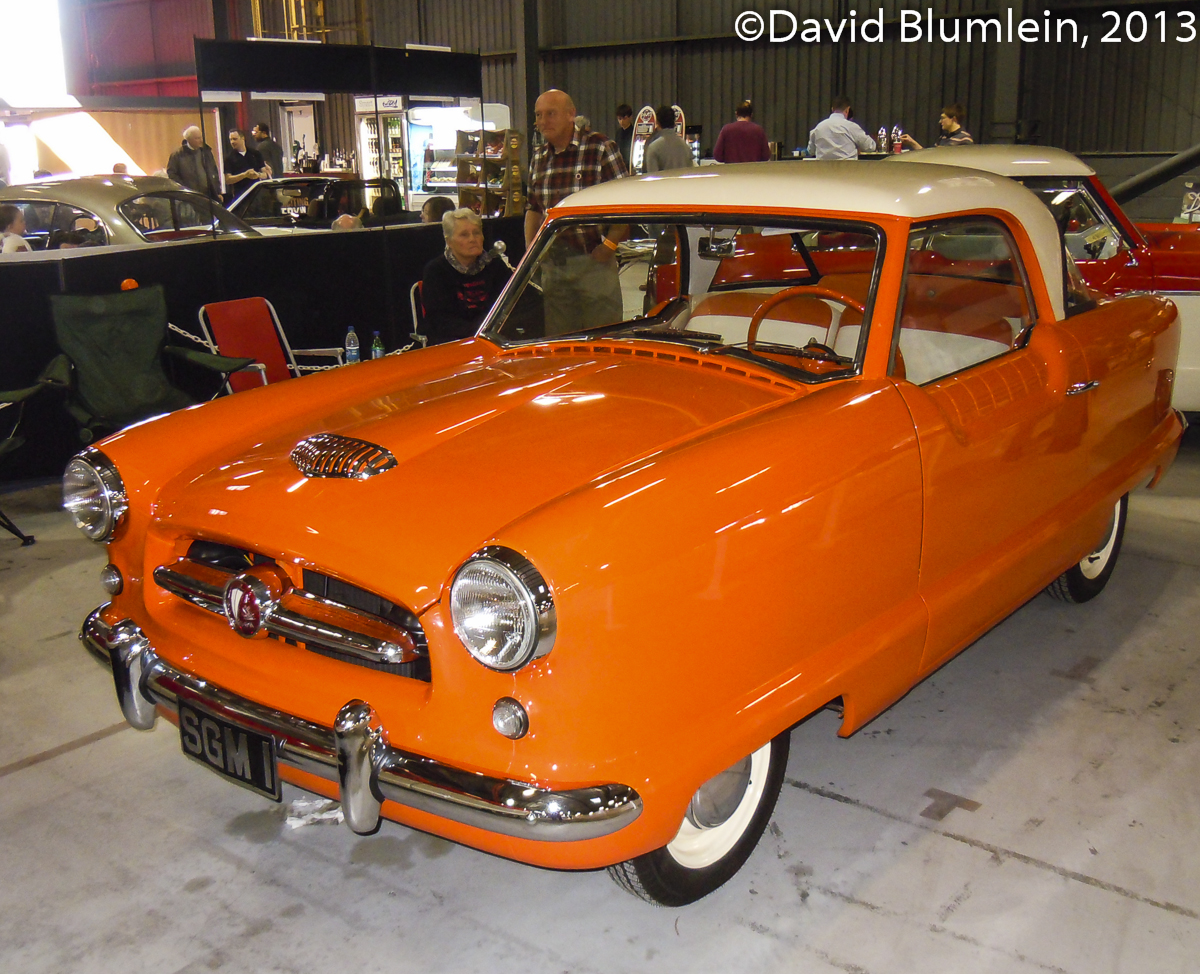
1954 Hudson Metropolitan
Based on a Nash prototype of 1950 called the NX1, this sub-compact car was put into production in 1954 by Austin at their Longbridge, Birmingham factory. It had a unitary construction convertible or coupé body and an Austin A40 4-cylinder o.h.v. engine initially of 1200 c.c. but in 1956 of 1489 c.c. The cars were at first for export to America only but became available in Britain from 1957. Known mainly as Nash Metropolitans some were sold as Hudsons; Hudson had merged with Nash in May 1954 to form the American Motors Corporation. The car was popular and was intended as a rival to imported European cars such as the VW Beetle – up to 97,000 Metropolitans were sold by 1961.

1924 Morris Cowley
It is entirely appropriate that the Show should contain a Bullnose Morris – 2013 represents the centenary of Morris car production which began with the 2-seater Morris Oxford in the Cowley works on the south west side of the city of Oxford. Some 11.6 million cars of various sorts have emerged so far from the site and BMW continues to produce the majority of Minis there to this day. William Morris soon realised the limitations of his original Oxford model having only two seats and planned a 4-seater version which would appeal much more to the family man. This was the Cowley although after the First World War the Cowley tended to be the more basic of the two Morris models.
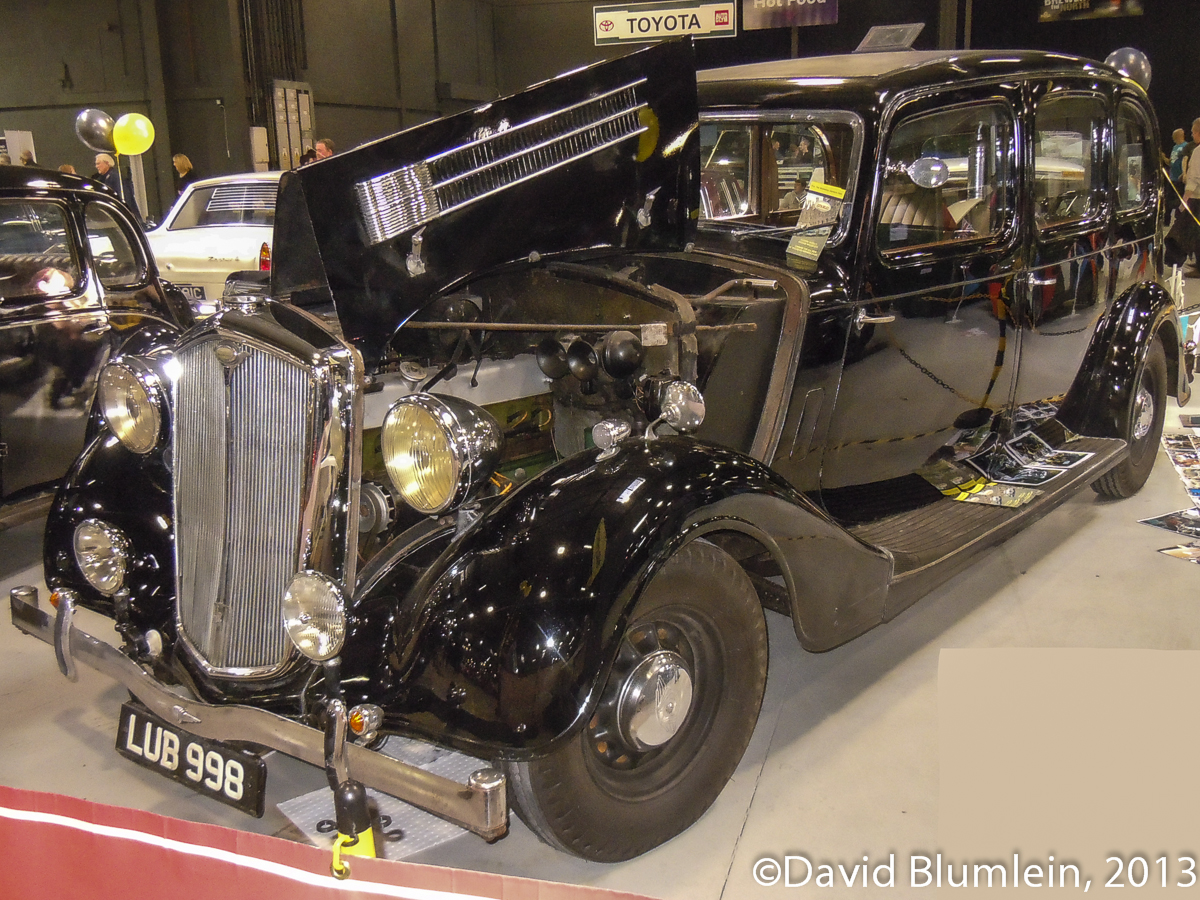
1948 Wolseley 25 Limousine
When William Morris bought Wolseley in 1927, he inherited their overhead camshaft engine designs, which were influenced by Wolseley’s First World War experience of building large numbers of the excellent Hispano Suiza V8 aero engines; these Viper motors had their overhead cams driven by vertical shafts. Morris used the Wolseley layout for his early Minors, M.G. sports cars and Wolseleys but by 1935 Nuffield rationalisation was taking over, instigated by the controversial Leonard Lord, and Morris and Wolseley cars had to settle for pushrod o.h.v. engines across the board while the Minor had gone side-valve!
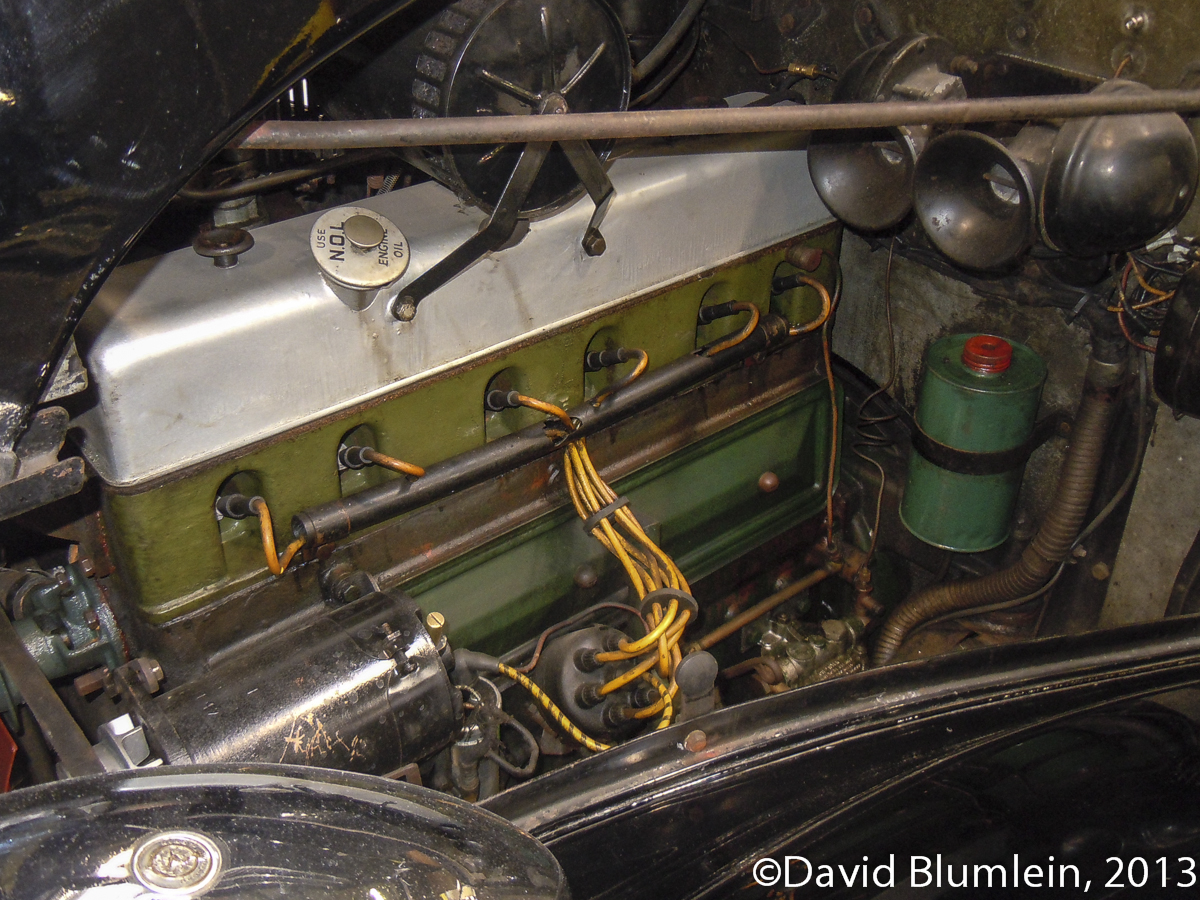
The biggest Wolseley made from 1938, the 25, used a 3485 c.c. 6-cylinder o.h.v. engine based on a Morris Commercial unit. Very few limousines were made up to 1948 when the completely new monocoque 6/80 and 4/50 models were introduced, surprisingly with overhead cam engines!
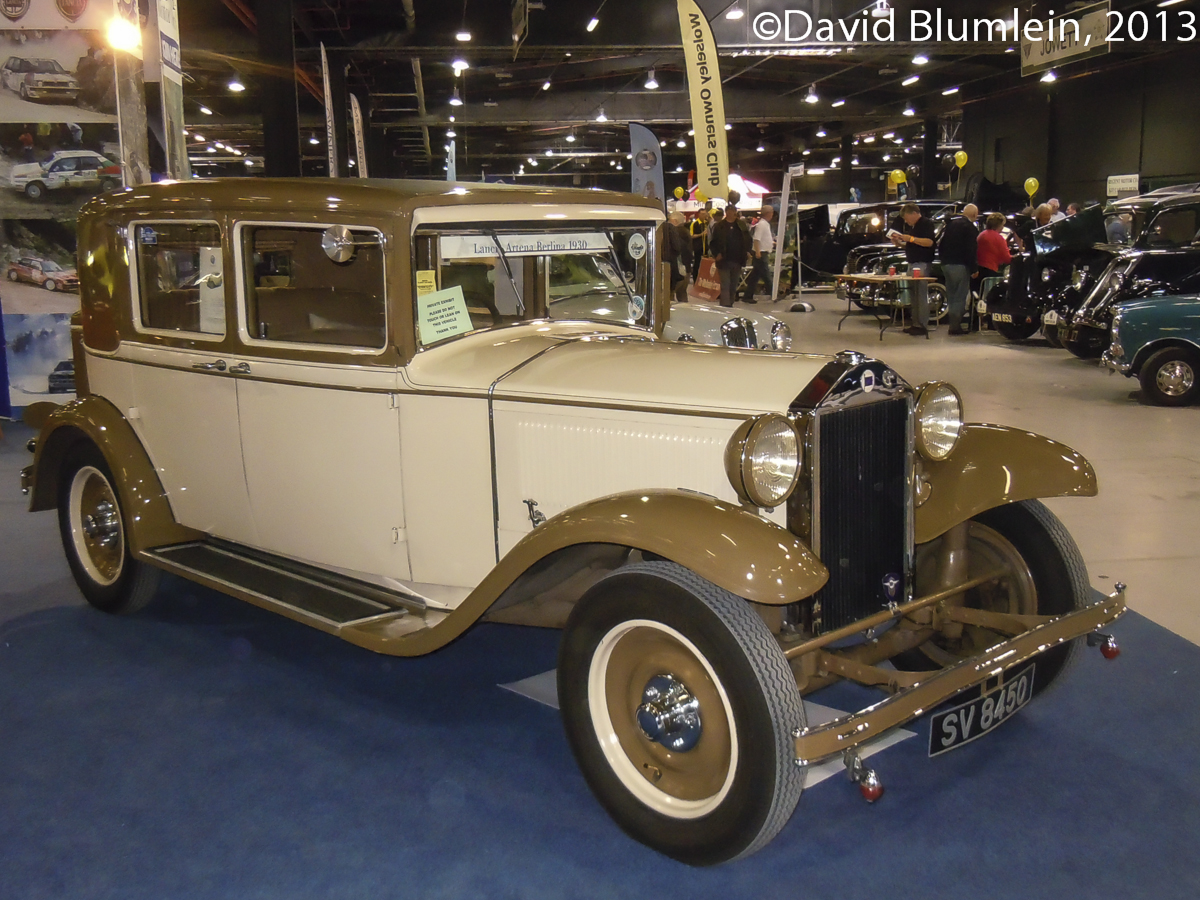
1931 Lancia Artena
When Lancia needed to replace the outstanding Lambda, it was decided to offer two models: the 1924 c.c. V4 Artena and the 2604 c.c. V8 Astura. The Artena’s engine was a very narrow V4 and the car had a box-section chassis with the familiar Lancia sliding pillar independent front suspension, a layout used extensively these days only by Morgan. By 1939 the Artena was only made as an army staff car or a light van chassis.
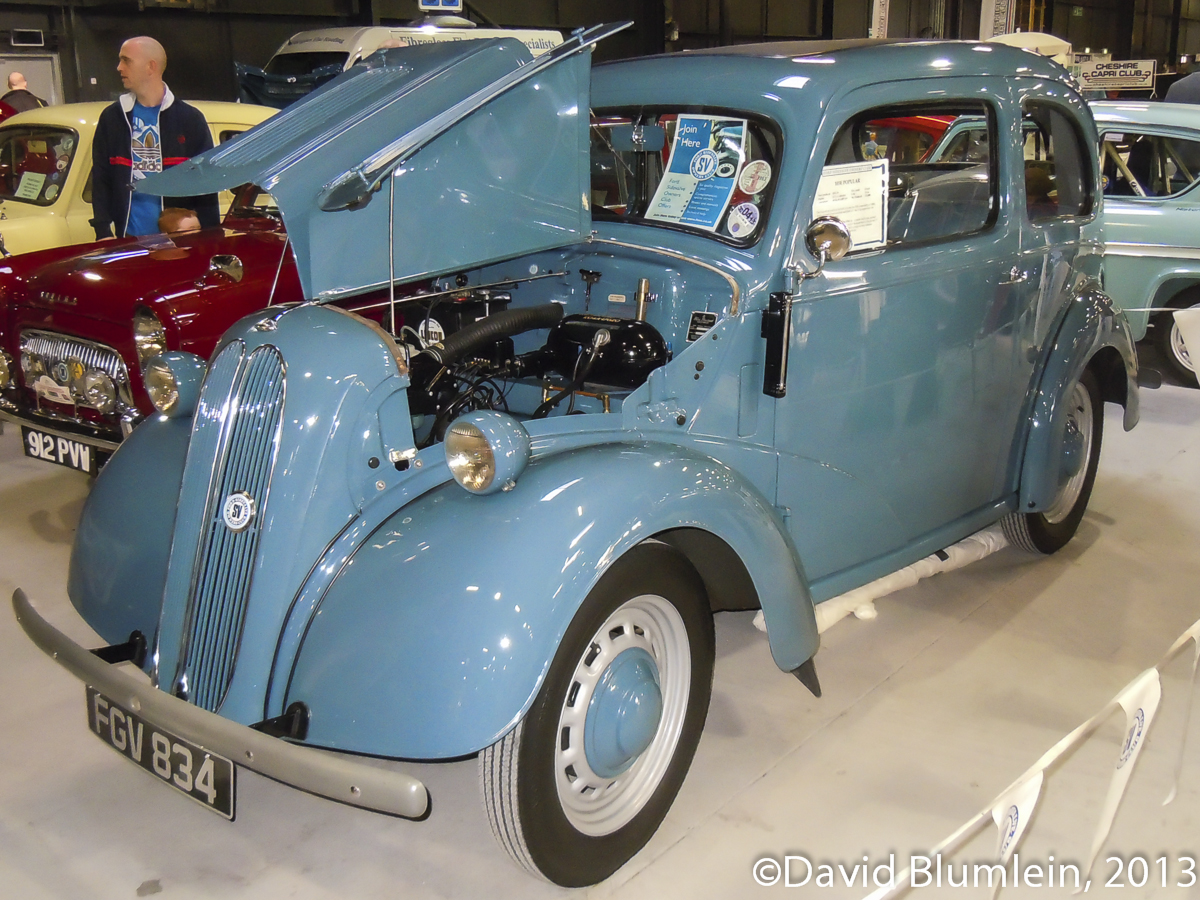
1953 Ford Popular 103E
The last of the upright “sit up and beg” cars from Ford. When introduced in 1953 it was the cheapest full-size car in Britain and consisted of the E494A Anglia stripped to bare essentials and given the 1172 c.c. 10 h.p. engine from the discontinued E493A Prefect. It was the last British car to have a side-valve engine and when production stopped at Ford’s Doncaster factory in 1959, some 155,000 had been made.
Some local cars:
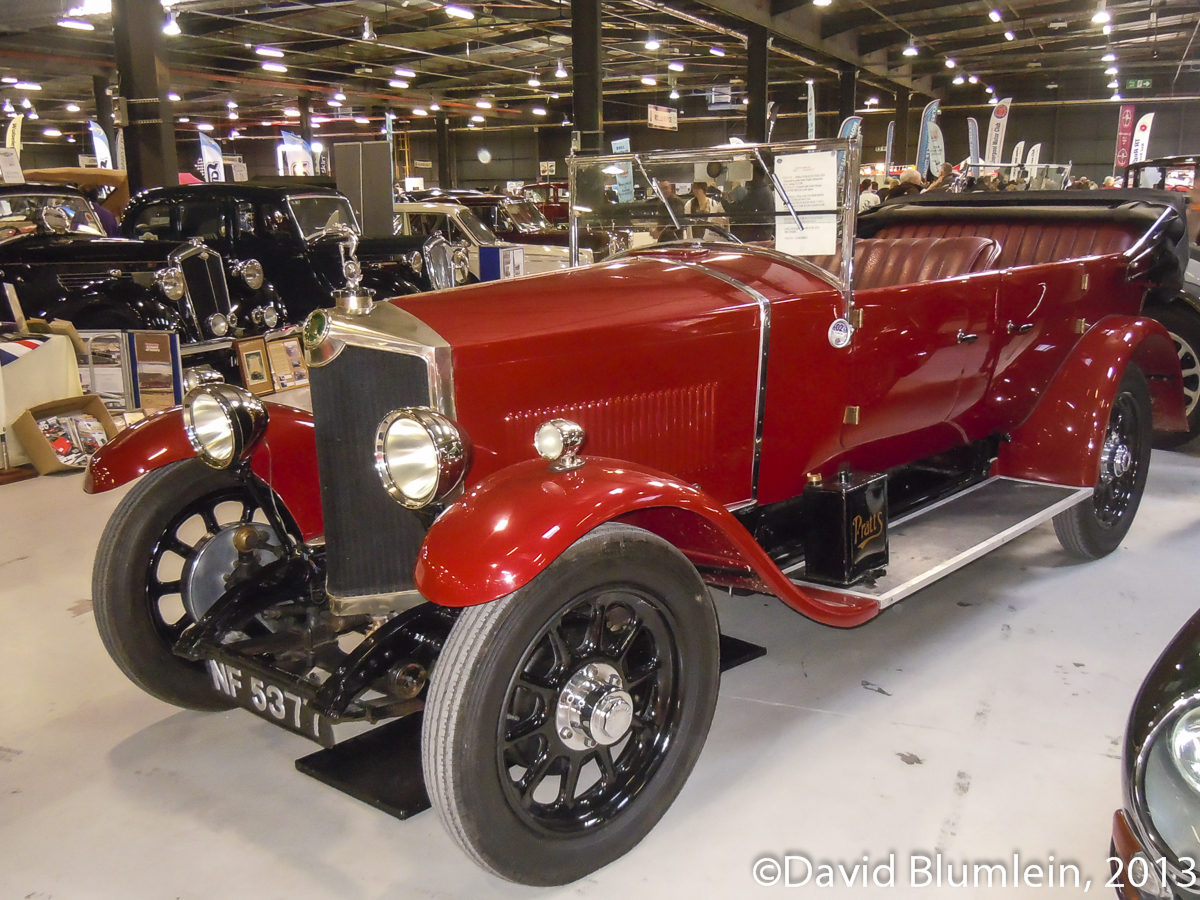
1927 Crossley 3-litre
Introduced at the 1925 Olympia Show, this was an important model for Crossley whose main factory was at Gorton in Manchester and whose reputation for making tough reliable cars was forged during the First World War with their RFC s. It was their first 6-cylinder car and had an o.h.v. engine of initially 2.7-litres and from 1928 of 3.2-litres:
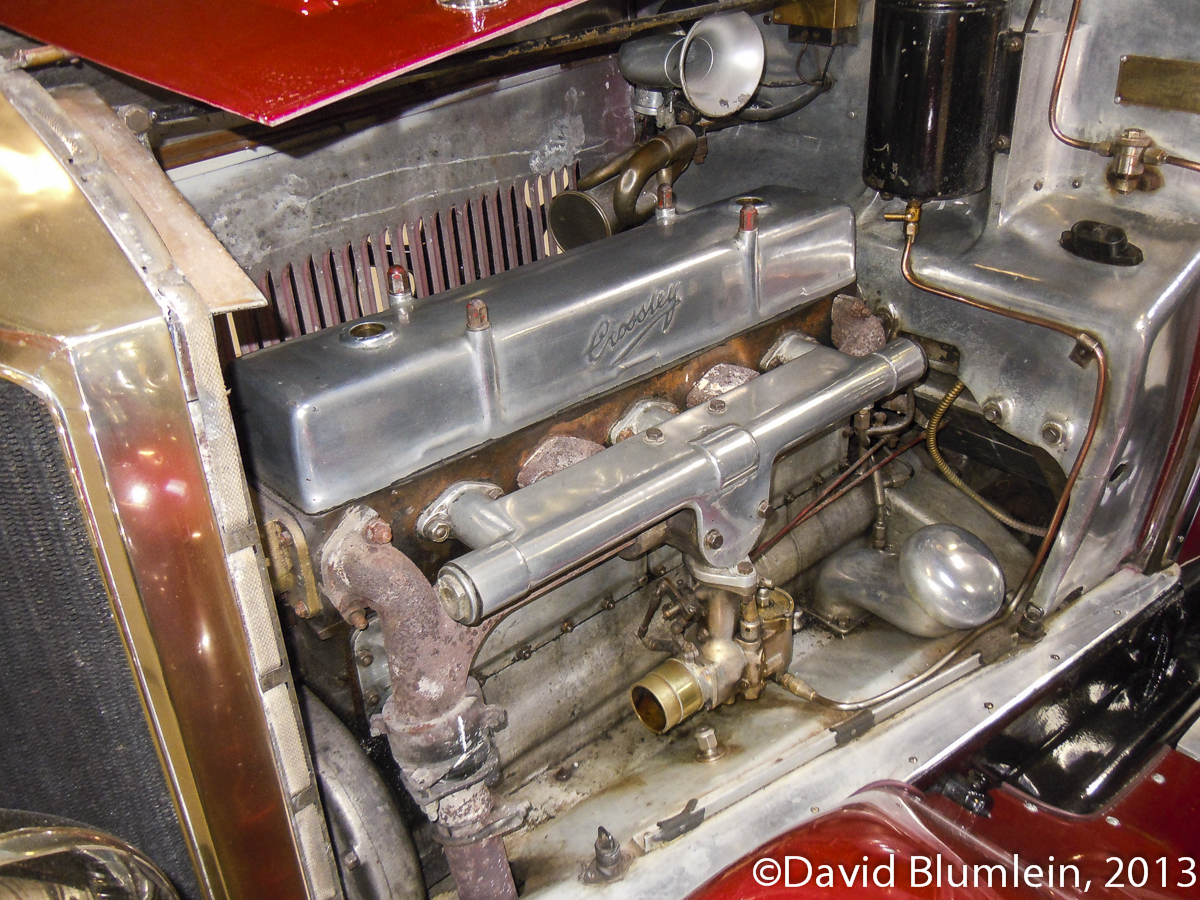
As part of its development programme the prototype was subjected to a continuous 24-hour test run at the banked Sitges track in Spain, a venue only ever used for racing in 1923! Among notable clients were the Duke of York and the Prince of Wales.
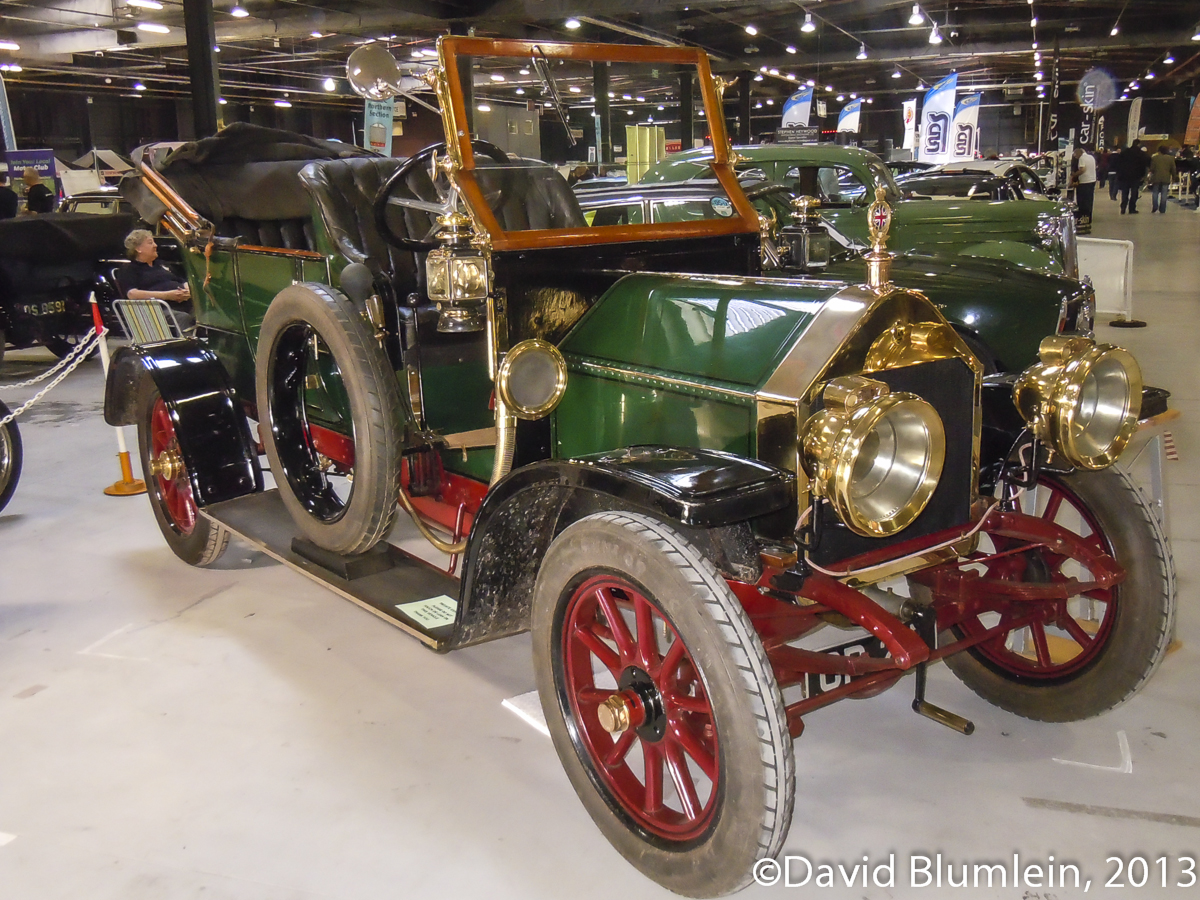
1910 Rothwell 20 h.p.
The Rothwell brothers made cars in the early 20th century in Oldham, Lancs. Their most successful model was this 20 h.p. which had a big 4150 c.c. 4-cylinder engine with dual ignition and bodywork built on the premises. About 60 Rothwells were made in all and production ceased in 1916.
TAILPIECE
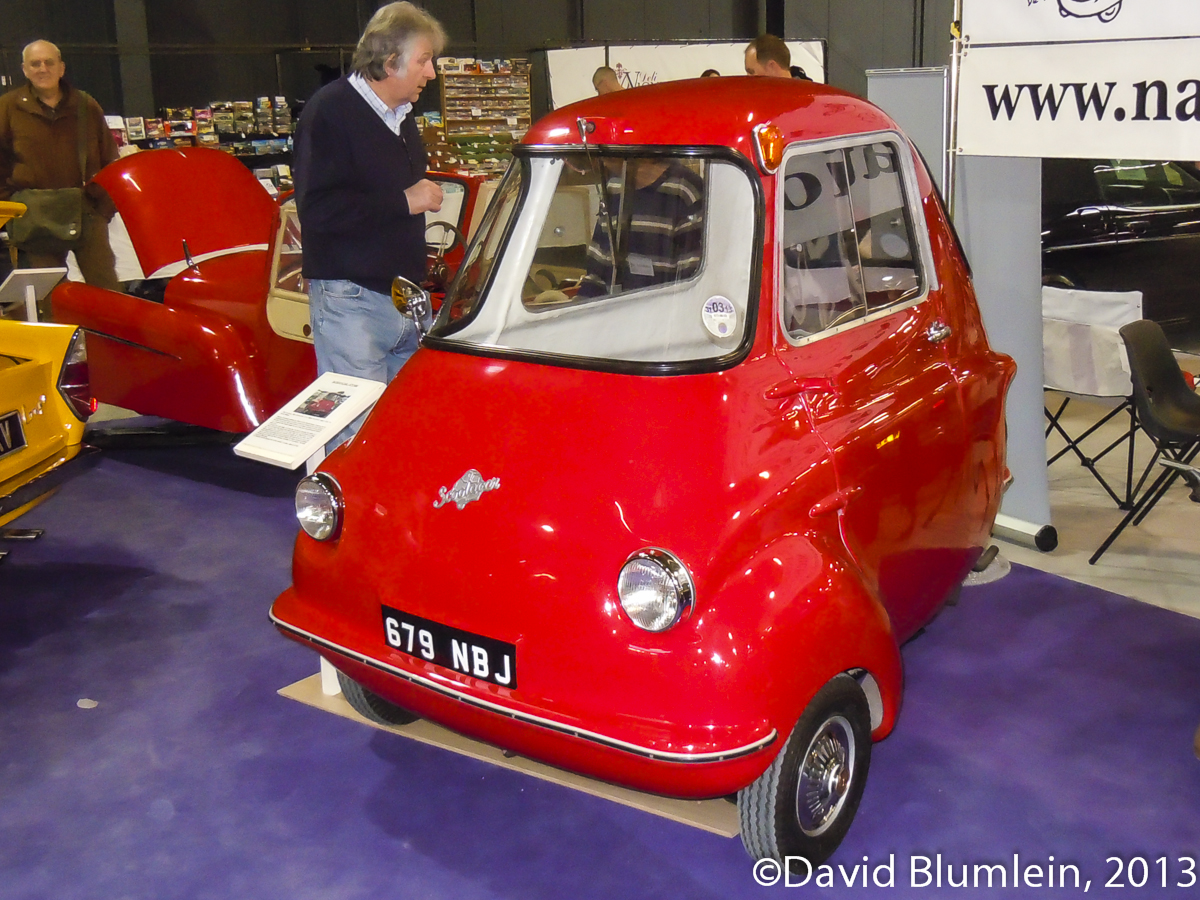
No, not a Peel but a slightly bigger Scootacar, dating from 1962 and made by an offshoot of the Hunslet railway locomotive company in Leeds. A single passenger could sit astride the engine cover which housed the 197 c.c. 2-stroke single-cylinder Villiers motor. Less than 1000 were made by 1964 when microcars were falling out of fashion.
David Blumlein, April 2013
Arguably one of the most elegant endurance racers of them all. The suave Martini livery disguising the brutal Ferrari V8 turbo lurking within. The results never matched the promise, but those of us lucky enough to see the LC2 in action remember them with great affection, like a distant love affair from the time when we were young………………an eternal question, what might have been?
John Brooks, April 2013
Silverstone 1983, and Alan Jones steers the Kremer Porsche 956 out of Copse. A rare shot of a 956 running with the long tail bodywork while not at Le Mans, the lack of downforce in this low drag configuration cost at least a few seconds a lap…………..Jones actually led the race courtesy of fitting intermediates at the start of the race when the track was wet, he and fellow Aussie, Vern Schuppan finished up 5th.
45 years ago today one of the greatest drivers of all time, Jim Clark, was killed at Hockenheim.
Eric Dymock’s excellent biography “Jim Clark” summed up the universal appeal of the man…………..
” A disk jockey on a radio station in far away Los Angeles said: “If you are mourning the death of the great driver, Jim Clark, put on your headlights.” The whole freeway lit up at midday.”
The lights go on and then off…………………..
John Brooks, April 2013
The recent trip to Florida concluded with a visit to the Tampa Bay Automobile Museum, a top notch affair. The Special Correspondent found much to appreciate and now brings us his latest ‘Rare and Interesting’ piece.
This is a museum that offers quality rather than quantity. It has a very rare collection of pre-war cars each of which is of great technical interest. Here are some of its rare gems:
Panhard Dynamic
The Dynamic was the last production Panhard to come out of the Avenue d’Ivry before the war. It was unusual in having a 6-cylinder sleeve-valve engine of 2.5, 2.8 or 3.8-litre capacity. It had all-round independent suspension by torsion bars, a unit-construction body with a wrap-round windscreen and three wipers. When introduced in 1936, it had the rare feature of a central driving position:
In 1939, this was changed to left-hand drive. Among its admirers was Léon Blum, leader of Front Populaire, who was to be seen frequently in Paris in his black example.
Willys-Knight Model 56
This is another sleeve-valve car and in the 1920s Willys made more of these engines than all the rest of the world put together. This car has a 2.6-litre 6-cylinder engine.
Tracta A
Jean Albert Gregoire was in 1927 the first to bring a front wheel drive car to the Le Mans 24 Hour race. The car pictured above ran at Le Mans in 1929 driven by Gregoire himself and Fernand Vallon and finished 10th overall while its teammate finished one place above and won the 1100c.c. class.
The two cars were powered by overhead valve SCAP engines of 985c.c.
The cockpit of the Le Mans car which has bodywork by Duval. Notice the lovely little gear-lever with a gate which has to select the gears right down to the front of the car.
Tracta E
In 1930-1931, Gregoire started making more luxurious saloons and coupés. This car has bodywork by Henri Le Moine and has a 6-cylinder Continental side-valve 2.7 litre engine driving the front wheels.
Cord L-29
Errett Lobban Cord was an entrepreneur who had rescued the famous Auburn and Duesenberg marques before making a car with his own name. He had been impressed by Harry Miller’s front wheel drive racing cars and the L-29 was the first front wheel drive American built car offered to the public. He had also acquired the Lycoming engine business and his car was naturally powered by a Lycoming 8-cylinder side-valve engine:
The car was introduced at the time of the Depression and only some 4,400 were sold.
The front suspension is unusual in having two quarter-elliptic springs on each side, neatly keeping out of the way of the drive-shafts.
In 1935 Cord introduced this aerodynamic car designed by Gordon Buehrig. It has a “coffin nose” which houses a specially made V8 Lycoming engine driving the front wheels and, advanced for the time, pop-up headlights. If a supercharger were fitted, it became the 812. Problems with the electro-vacuum transmission and other delays caused sales to drop off and the car was very expensive. Just under 3000 had been made before production ceased in August 1937.
Aero Type 50
The Aero aircraft company of Prague started making light cars in 1929 with 2-stroke engines. In 1934 a new range of Basek-designed cars were introduced, the Type 30 with a twin-cylinder engine and by 1938 the Type 50 with a 4-cylinder in-line 2-stroke engine driving the front wheels:
Not many enthusiasts will be familiar with an in-line four 2-stroke!
The Aero must not be confused with the Czech Aero Minor which was based on a JAWA design.
Amilcar Compound
Amilcars, like Salmsons, were the typical small French sports cars of the 1920s and both companies began to make bigger touring cars in the following decade. In 1937 Amilcar was taken over by Hotchkiss who engaged Jean Albert Gregoire to design a light car for them. This was the Compound which had unitary construction in Alpax alloy, all independent suspension with transverse leaf spring at the front, torsion bars at the rear and rack and pinion steering. The engine was a 4-cylinder side valve of 1185c.c. which naturally drove the front wheels! In 1939 it acquired overhead valves but the war intervened and less than 900 Compounds were made all told.
Derby V8
These V8s were the last Derby cars to be produced. The Lepicard designed cars had engines with side inlet valves and exhaust overhead valves driving the front wheels. This roadster has a body called “Montlhéry” and was used by Gwenda Stewart in the 1934 Monte Carlo Rally. Two V8 Derbys ran unsuccessfully at Le Mans in 1934 and a single further entry also retired in 1935.
TAILPIECE
Fearing in August 1914 that their Saint-Denis factory would fall into enemy hands as the Germans advanced towards Paris, Hotchkiss decided to set up a works in Gosford Street, Coventry where they began in 1915 to build machine guns for the Allied war effort. After the cessation of hostilities, the company started to mass produce engines for William Morris and launched a V-twin air cooled 1080c.c. engine of their own which went on to power the B.S.A. Ten car. This engine was successfully tried out in an old Morris Oxford chassis which was run in the 1921 Land’s End Trial where it won a Gold Medal. In 1923 William Morris bought the whole Hotchkiss factory and changed it into Morris Engines. However, B.S.A. were given the licence to carry on producing the engine for their cars. The above picture illustrates one such engine in a B.S.A. three-wheeler.
David Blumlein, March 2013